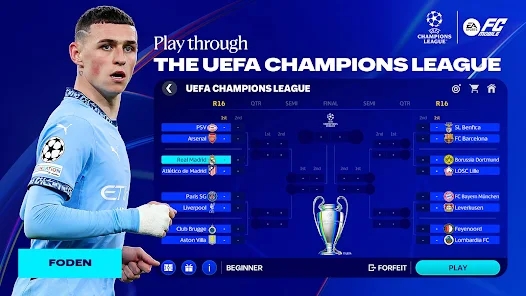The Unexpected Success of Casual Games: Why They're Redefining Mobile Gaming
The mobile gaming landscape is shifting. Long seen as just a way to kill time during a commute or coffee break, **casual games** are rapidly gaining traction—not just in downloads, but in revenue and user loyalty. This shift is driven by the growing subcategory of *business simulation games*, where players manage virtual enterprises without the complexity typically associated with deeper game mechanics. But why now? The rise of **mobile esports**, coupled with evolving player habits, means that even simple games can offer substantial engagement. As more studios experiment with monetization models—from in-app purchases to subscription-based services—the potential profitability of casual titles is undeniable. Let's dive into what makes this trend tick. ---What Makes a Game "Casual," Anyway?
At their core, casual business simulation games prioritize **quick gameplay sessions**, intuitive design, and **accessible storytelling**. These titles often feature simplified controls, bite-sized objectives, and a low learning curve—yet many have deep progression systems. Key traits of a great **casual game**:- User-friendly interface
- No complex menus or control schemes
- Rewards based on short playtime rather than commitment marathons
- High retention strategies (daily logins, streaks, etc.)
- Minimal social features unless designed for virality
Economic Simulation Mechanics: Why Players Are Coming Back for More
While not traditionally high on adrenaline-pumping excitement levels, economic sim games tap into something more personal: ownership. There’s immense satisfaction in nurturing a virtual lemonade stand from one location into a booming multinational chain. That psychological hook keeps players engaged far longer than expected—a phenomenon developers now actively optimize using data analytics and adaptive algorithms. Some key factors fueling this:- Psychological reward loop (effort ➝ improvement ➝ reward)
- **Low risk/high satisfaction balance** - Social proof: sharing results with friends This model works especially well when fused with offline persistence, meaning progress continues outside of active play. Players come back to see how their imaginary empire has grown during dinner or sleep—which cleverly builds habitual usage over days, then weeks. ---Case Study Spotlight: FarmVille Reimagined
Before TikTok trends or battle royale fads emerged, **Zynga's FarmVille** showed mainstream audiences the appeal of building virtual worlds without combat or quests. Today’s mobile versions keep this legacy alive through cloud saves and push notifications—but with fresher art directions. Notable features include:| Better graphic polish |
| Livestream integrations (for influencer collabs) |
| Giving gifts among mutual followers (not real friends?) |
| Natural disaster events adding scarcity & drama elements |
Casual Meets Business Strategy — Bridging the Gap
Business sims within the casual sphere blend two distinct worlds—one rooted in relaxation and ease, the other requiring careful decision-making, resource juggling, even occasional market research. So how does a designer merge those? Main Techniques Applied:- Mechanics abstracted into emoji-like assets (“buy," “expand," “sell" represented through colorful icon clusters)
- Avoiding currency types: One unit system simplifies micro-economy.
- Hassle-free automation buttons reduce cognitive overload early-on.
- Versus modes pitted locally with asynchronous competition loops, ensuring you don’t get addicted overnight 😉
Cultural Trends Pushing Innovation in the Genre
It’s no coincidence that casual simulations mirror real-world societal shifts. Inflation anxiety driving users toward budget management? Yep, there's probably a **coffee truck manager game** ready to satisfy. People fantasizing over quitting desk jobs to become baristas running tropical cafes somewhere in Costa Rica 🌺 Well, some enterprising devs are betting hard on your dopamine responses tied to fantasy job play. These subtle reflections create subconscious familiarity—even comfort—when players fire up the apps. That connection translates directly into extended usage times, and indirectly, increased purchase frequency. ---The Future of the Casual Genre: Predictions & Opportunities
Looking ahead, expect more crossover experiments. For example, **Delta Force: Team Sabre**, which previously used heavy narrative-driven tactics gameplay online, experimented last year on social media platforms with *miniature base construction puzzle-games*. Though niche so far, it suggests even serious IP holders want part of that sweet "noobs-in-the-lounge"-type action. What could this lead toward?- Potential Directions:
- Bigger licenses making use of offbeat humor in non-combat spin-offs ("Fortnite meets McDonald's Happy Builder Mode")
- Esports integration for leaderboards + bragging rights—maybe not live PvP, but weekly top scores with global charts.
- Beta-tier monetization testing different ARPPU models, targeting tiered regional economies (i.e. cheaper power-ups in poorer nations → higher conversions)
- In-game asset creation tools allowing user customization that could turn into mini-communities à la Reddit-level obsession.
Revenue Models and ROI Analysis in Casual Titles
Despite lacking high production values of mid-core AAA experiences, the average revenue per paying user (*ARPU*) remains impressively competitive thanks largely to daily rewarded actions incentivizing repeat purchases at $0.99 increments. Fascinating Stats: - Free version engagement often tops out around 7–8 months lifetime. - Paid upgrades boost engagement metrics significantly (>2x session longevity). Monetization methods commonly applied:- Ad placements integrated into idle moments (between baking cycles) - Cosmetic bundles with slight efficiency boosts - Event timers that allow skipping (e.g. accelerate factory production) This hybrid structure balances between generous free content and enticing paid offerings, encouraging soft pay-to-skip or prestige rewards instead of grinding for weeks. ---
Why Publishers Are Betting Big Now—& How to Get Started
The current momentum reflects broader consumer fatigue with ultra-high-stakes multiplayer warfare or intricate quest chains that eat away weekends. Publishers once fixated solely on blockbuster IPs are now greenlighting lighter fare projects, hoping smaller teams will punch above their weight creatively while minimizing financial risk. To capitalize:➡ Start lean — MVP-focused development cycle
➡ Iterate based on beta audience behaviors ➡ Design flexible IAP tiers adjustable across territories
➡ Use social hooks strategically (Twitter buzz matters here!) As platforms like TikTok and Twitch become new testing grounds for indie creators experimenting with short-loop mechanics similar to casual gaming tropes—publishers must consider multi-channel marketing beyond Facebook ad retargeting. It's time for experimentation, not consolidation. ---
In Retrospect: Key Takeaways for Gamers and Devs Alike
To sum things up clearly, here are the critical insights from all the trends shaping **mobile casual business simulation games**: ✅Accessibility beats technical finesse any day when aiming mass-market adoption💸 Clever economy design drives revenue growth despite modest visual fidelity
📈 Cross-promotion opportunities expand beyond entertainment into self-aware lifestyle content (finance, entrepreneurship)
📱 Platform-specific adaptability helps tailor content per region effectively Developers would benefit by studying the long-running chart toppers not just as templates—but inspiration points for blending tradition with disruptive design. If you’ve yet to try this emerging segment seriously… now is as solid an entrance moment as any! ---
Final Word: Why This Moment Might Be Just Beginning
With mobile hardware becoming increasingly versatile every 12–14 mo, plus generative AI poised to reshape backend logic in near-future releases (think auto-generated storylines tailored by behavioral history)—the ceiling for casual simulation titles looks ever-brighter. Whether you're building restaurants, farms, resorts, spaceports, or bizarre startups like "Goblin SEO Consultant Inc.," **these games provide more than distraction;** they offer emotional catharsis in bite-sized, satisfying ways. In an age craving escapism but lacking time for grand campaigns, sometimes the most profitable trend in mobile gaming comes dressed in simple packaging—with surprise buried under pixels of expectation-shattering fun.About The Author
Lars Holm is a digital strategist focused at Norway-based tech consultancy MindFrame Studios focusing particularly on mobile UX, cultural gaming behavior analysis, and AI-driven monetization modeling since 2021.Reach him at: [www.mindframe.no] or @larholm_seo_tweaks (on X)



